|
C U R R I C U L U M M A T E R I A L S
|
|
Malcolm Moore
|
Overview
Main Ideas
Illinois and its citizens changed significantly in the decades following the adoption of the 1870 Constitution. In short, the constitution had outlived its usefulness. In addition, the 1960s were a time of turbulence and change. Seeking more responsive governments, people sought to be more involved in the decisions their governments made. These factors helped create the atmosphere for the calling of the constitutional convention of 1969-1970. These lessons will look at the times, the need for change, and the ways in which the 1970 constitution is more a "people's" constitution than its predecessor.
Connection with the Curriculum
These materials may be used in a U.S. history or government class. In a history class, the lessons may be tied to the study of the protest movements of the 1960s. In a government/civics class, they may be used as part of the study of the Illinois Constitution or to show how change comes about and how society influences constitution making. The activities may be appropriate for meeting the Illinois Learning Standards for Social Science
16.A.3a, 16.A.4a, 16.D.3(w), 16.D.4b, 17.C.3C,
17.C.4a, 17.C.4b, 18.C.3b, and 18.B.4
Teaching Level
Grades 7-12
Objectives for Each Student
• Work in cooperative groups
• Research, collect, and categorize social data
• Interpret population statistic tables
• Read and retrieve specific information from primary sources
• Draw conclusions and make judgments based on research data
47
|
SUGGESTIONS FOR TEACHING THE LESSON
|
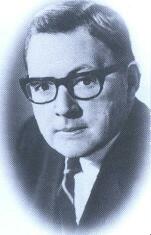
Richard Ogilvie was governor when the constitutional convention finished its work in 1970.
|
FROM HORSE AND BUGGY TO THE SPACE AGE
Materials for Each Student
• Activity Sheet: From Horse and Buggy to the Space Age Handouts:
• Population by Geographical Divisions in Census Years
• Illinois and Its Counties
• Textbook and/or other books that provide information on how people lived in the U.S. in 1870 and 1970
• Pen or pencil
• Calculator (if students are to figure percentages from the population table)
Opening the Lesson
• This lesson asks students to construct knowledge by using their research skills and to draw conclusions based on their research. Specifically, they will explore how Illinois changed in the century between the writing of Illinois' third and fourth constitutions and look at how people lived, worked, traveled, and entertained themselves. Make sure you know what sections of your history book can be used to access such information. You may also wish to gather a group of books or internet web sites to assist students in their research.
• Engage students in this lesson by asking them to think of how things have changed since they were little. One good way to approach this is with toys. Students inevitably think that all the good toys have been invented now that they are older and are no longer regularly receiving toys as gifts. You might wish to focus on computer games, such as Play Station. Would they like to still be playing with the earlier versions of these toys?
• Explain to the students that while the lives and ways of living for the people of Illinois changed a great deal in the century between 1870 and 1970, their state constitution had not. To convince voters to call for a constitutional convention in 1969, proponents called the 1870 Constitution a horse-and-buggy document no longer suited to the space age. In this activity students will explore just how much the lives of Illinoisans (and other Americans) had changed in the period from 1870 to 1970.
Developing the Lesson
• Provide each student with Handout 1: From Horse and Buggy to the Space Age, and a copy of the table Population by Geographical Divisions in Census Years, Handout 2.
Direct them to appropriate sections of their textbook or other books and have them work individually or in groups to research and complete the chart.
Once the research has been completed, lead a class discussion on the findings. Challenge students to make generalizations regarding the areas in which they think society changed the most in the time period.
Concluding the Lesson
• Focus students' attention on the table Population by Geographical Divisions in Census Years. Use a questioning strategy that helps students to see that Illinois' population not only more than quadrupled in this time, but that where the people lived and how they earned their livings also changed. The chart shows that more than 86% of the population lived downstate in 1870, leading to the inference that 86% of the population was rural and agricultural. By 1970, only slightly over 50% were located downstate, (Students may need help understanding that downstate Illinois in 1970, though still more rural and agricultural than Chicago, Cook County, and the suburbs, was not as rural and agricultural as in 1870.)
• To convince voters to call for a constitutional convention in 1969, proponents called the 1870 Constitution a horse-and-buggy document no longer suited to the Space Age. This implies a huge change in society for which the framers of the 1870 Constitution could not have foreseen nor provided. Do the students agree or disagree? What changes in the century between 1870 and 1970 might the convention of 1870 not have predicted? Ask each student or group to develop a product (short speech, poster, radio or television commercial, billboard, etc.) to persuade the people of Illinois to either vote to call or to reject the 1969-1970 Constitutional Convention based on the proponents assertion that a constitution written in the 1870s cannot adequately serve society in the 1970s.
Extending the Lesson
• You may wish students to examine the 1960s as a time of protest and reform that would encourage the calling of a constitutional convention. Students may research and report on such topics as the civil rights movement, voting rights issues such as Baker v. Carr (1962), Woodstock, and the anti-war protest movement (especially at Kent State University, Jackson State University, and the University of Illinois at Urbana-Champaign). In addition to those categories listed on the Horse and Buggy to the Space Age worksheet, students could also investigate and compare education, culture, quality of life, immigration, and/or racial change.
48
Assessing the Lesson
• Assessment should be based on the products presented. Criteria should include adherence to topic, reasoning, appeal to the audience, accuracy of facts, and presentation.
POWER TO THE PEOPLE
Materials for Each Student
• Handout 4: Article XIV of the Illinois Constitution of 1870
• Copy of Article XIV of the Illinois Constitution of 1970
• Handout 5: Power to the people
Opening the Lesson
• You will want to read the entire texts of Article XIV from the 1870 and 1970 Illinois constitutions ahead of time. Article XIV of the 1870 constitution is contained in this issue, Handout 4, and Article XIV of the 1970 constitution can be obtained from <www.legis.state.il.us/commision/lrb/conmain.htm>.
• Open with a questioning strategy that will help students to understand that when goals are too hard to attain, people often get frustrated and give up, (You may wish to use Aesop's fable The Fox and the Grapes). Even if what people want is important to them and their welfare, they eventually get discouraged. Transfer this idea to frustrations about governments, which are supposed to be of the people, by the people, and for the people.
• You might close this part of the discussion with the question, "Are people more likely to participate in government if such participation is easy or if it is difficult?"
• A complaint about the 1870 Illinois Constitution was that it was too hard to amend and was not responsive enough to the people's needs. In this lesson, students will compare the amending process of 1870 to that of the 1970 Illinois Constitution with two questions in mind. Is the 1970 Constitution easier to amend? How does the 1970 Illinois Constitution make the amending process more responsive to the voters of Illinois in Article XIV?
Developing the Lesson
• Provide each student or group of students with a copy of the handout Article XIV of the Illinois Constitution of 1870 and the activity sheet Power to the People. Go through the directions and allow the groups to work, assisting as necessary.
Concluding the Lesson
• Once the groups have completed their work, discuss their findings. Draw their attention back to the two questions posed at the end
of Opening the Lesson. Following the class discussion, assign students to write a persuasive paragraph or essay about how Article XIV proves that the 1970 Illinois Constitution is easier to amend and more responsive to the needs of the people of Illinois than the 1870 Constitution. (If students have done the first lesson, From Horse and Buggy to the Space Age, they may wish to incorporate some information about how quickly society is changing and the need for government to respond accordingly)

Extending the Lesson
• Students may choose to make similar comparisons between the Bill of Rights (Article II in 1870 and Article I in 1970) or suffrage (Article VII in 1870 and Article III in 1970). A copy of the 1870 Illinois Constitution may be found in any Illinois Blue Book, 1967-1968 or earlier. The 1970 Illinois Constitution as presented by the Constitutional Convention and ratified by the people of Illinois on December 15, 1970, can be found in the Illinois Blue Book, 1971-1972 and at the following web site: <www.legis.state.il.us/commision/lrb/conmain.htm>. (Ten amendments have been added between 1980 and 1998.)
• In the Narrative section it is asserted that the makeup of the Constitutional Convention delegation "reflected a different group of 'the people' than did a typical legislature." How representative was this group compared to the people of Illinois as a whole? Students might find this research fun. Included in the Illinois Blue Book, 1969-1970 is a photograph and a brief biography of each Constitutional Convention delegate. By copying and cutting them apart, you could have students compile data on gender, race, education attained, and occupation to see if they think the group accurately reflected the people of Illinois. The 1970 U.S. Bureau of the Census statistics for Illinois show that the population was approximately 48.5% male and 51.5% female; 86.4% white and 13.6% nonwhite; and 82.9% urban and 17.1% rural. Regarding the education level of residents, 4.3% had attained post graduate status, 6% had completed 4 years of college, 10.4% had completed some college, 31.9% had graduated from high school, and 47.4% had not graduated from high school.
Assessing the Lesson
• Informal assessment should include group participation, the completion of the activity sheet, and participation in the class discussion. The paragraph/essay should be evaluated to see it the student took a position and backed it with data gleaned from the activity sheet, primary sources, and/or the class discussion.
49

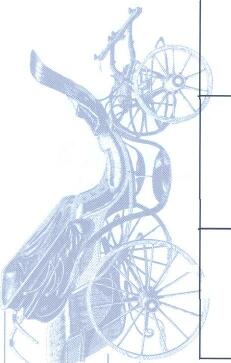
|
|
FROM HORSE AND BUGGY TO THE SPACE AGE
|
|
1870
|
CATEGORY
|
1970
|
|
|
TRANSPORTATION
|
|
|
|
TECHNOLOGY
|
|
|
|
SOCIAL ACTIVITIES
|
|
|
|
EMPLOYMENT
|
|
|
|
POPULATION
|
|
|
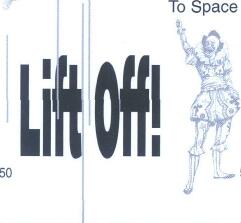

POPULATION BY GEOGRAPHICAL DIVISIONS IN CENSUS YEARS
|
YEAR
|
RANK
|
ILLINOIS
|
CHICAGO
|
SUBURBS
|
COOK Co.
|
DOWNSTATE
|
|
1970
|
5th
|
11,113,976
|
3,366,957
|
2,125,412
|
5,492,369
|
5,621,607
|
|
1960
|
4th
|
10,081,158
|
3,550,404
|
1,579,321
|
5,129,725
|
4,951,433
|
|
1950
|
4th
|
8,712,176
|
3,620,962
|
887,830
|
4,508,792
|
4,203,384
|
|
1940
|
3rd
|
7,897,241
|
3,396,808
|
666,534
|
4,063,342
|
3,833,899
|
|
1930
|
3rd
|
7,630,654
|
3,376,438
|
605,685
|
3,982,123
|
3,648,531
|
|
1920
|
3rd
|
6,485,280
|
2,701,705
|
351,312
|
3,053,017
|
3,432,263
|
|
1910
|
3rd
|
5,638,591
|
2,185,283
|
219,950
|
2,405,233
|
3,233,358
|
|
1900
|
3rd
|
4,821,550
|
1,698,575
|
140,160
|
1,838,735
|
2,982,815
|
|
1890
|
3rd
|
3,826,352
|
1,099,850
|
92,072
|
1,191,922
|
2,634,430
|
|
1880
|
4th
|
3,077,871
|
503,185
|
104,534
|
607,719
|
2,470,152
|
|
1870
|
4th
|
2,539,891
|
298,977
|
50,989
|
349,966
|
2,189,925
|
|
1860
|
4th
|
1,711,951
|
112,172
|
32,782
|
144,954
|
1,566,997
|
|
1850
|
11th
|
851,470
|
29,963
|
13,422
|
43,385
|
808,085
|
|
1840
|
14th
|
476,183
|
4,470
|
10,201
|
|
|
|
1830
|
20th
|
157,445
|
|
|
|
|
|
1820
|
24th
|
55,211
|
|
|
|
|
|
1810
|
|
12,282
|
|
|
|
|
From: Robert P. Howard, Illinois: A History of the Prairie State (Grand Rapids, Mich: William B. Eerdmans Publishing Co., 1972) p. 575.

51

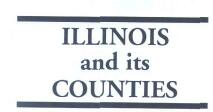
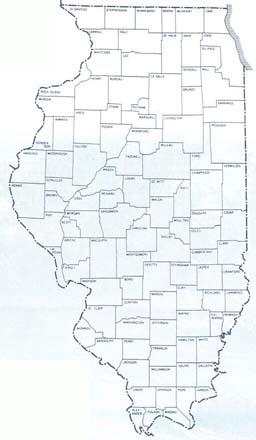
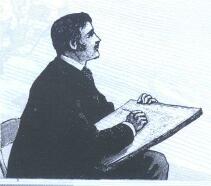

1870 CONSTITUTION
ARTICLE XIV
Amendments to the Constitution
1. Whenever two-thirds of the members of each house of the General Assembly shall, by a vote entered upon the journals thereof, concur that a convention is necessary to revise, alter or amend the Constitution, the question shall be submitted to the electors at the next general election. If a majority voting at the election vote for a convention, the General Assembly shall, at the next session, provide for a convention, to consist of double the number of members of the Senate, to be elected in the same manner, at the same places and in the same districts. The General Assembly shall, in the Act calling the convention, designate the day, hour and place of its meeting, fix the pay of its members and officers, and provide for the payment of the same, together with the expenses necessarily incurred by the convention in the performance of its duties. Before proceeding, the members shall take an oath to support the Constitution of the United States, and of the State of Illinois, and to faithfully discharge their duties as members of the convention. The qualification of members shall be the same as that of members of Senate, and vacancies occurring shall be filled in the manner provided for filling vacancies in the General Assembly. Said convention shall meet within three months after such election and prepare such revision, alteration or amendments of the Constitution as shall be deemed necessary, which shall be submitted to the electors for their ratification or rejection, at an election appointed by the convention for that purpose, not less than two nor more than six months after the adjournment thereof; and unless so submitted, and approved by a majority of electors voting at the election, no such revision, alteration or amendments shall take effect.
2. Amendments to this Constitution may be proposed in either House of the General Assembly, and if the same shall be voted for by two-thirds of all the members elected to each of the two houses, such proposed amendments, together with the yeas and nays of each house thereon, shall be entered in full on their respective journals, and said amendments shall be submitted to the electors of this State for adoption or rejection, at the next election of members of the General Assembly in such manner as may be prescribed by law. Each proposed amendment shall be published in full at least three months preceding the election, and if either a majority of the electors voting at said election or two-thirds of the electors voting on any such proposed amendment shall vote for the proposed amendment, it shall become a part of this Constitution. But the General Assembly shall have no power to propose amendments to more than three articles of the Constitution at the same session, nor to the same article oftener than once in four years. The proposition for the adoption or rejection of the proposed amendment or amendments shall be printed on a separate ballot or in a separate column on the ballot as the General Assembly by law may provide and the voters thereon shall be cast by voting upon such separate ballot or in such separate column as the case may be.
Reprinted from the Illinois Blue Book, 1967-1968
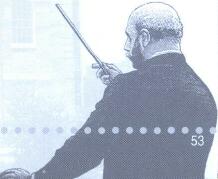

POWER TO THE PEOPLE
Part I.
In the right column is information from Article XIV of the 1970 Illinois Constitution. Each part that is in bold italics indicates a change from the same article in the 1870 Illinois Constitution. Carefully examine Article XIV from 1870 and write its language in the left column. See the following document for the 1870 constitution.
|
1870
|
1970
Section 1-Constitutional Revision
General Assembly may submit a proposal to the voters to call for a Constitutional Convention by a 3/5 vote in each house at the next general election.
The question of whether to call a Constitutional Convention must appear on the ballot at least every 20 years.
The convention will be held if approved by 3/5 of those voting on the proposition or a majority of those voting in an election.
To be submitted to the voters for ratification, constitutional revisions or amendments must be passed by the Constitutional Convention delegates by a majority vote.
Revisions or amendments are submitted to the voters of Illinois and are ratified by a majority of those voting on the question.
Section 2 - Amendments by General Assembly
Amendments may be proposed by a 3/5 vote in each house of the General Assembly.
Amendments are submitted to the voters of Illinois and are ratified by a 3/5 vote on the question or by a majority of those voting in an election.
Part II
|
Now read Article XIV, Section 3 of the 1970 Illinois Constitution. Nothing like this exists in the 1870 Illinois Constitution. What special amending powers are granted to the citizen's of Illinois? One the back of this page, make some notes on how this works.
Click here to return to the article
54
|

